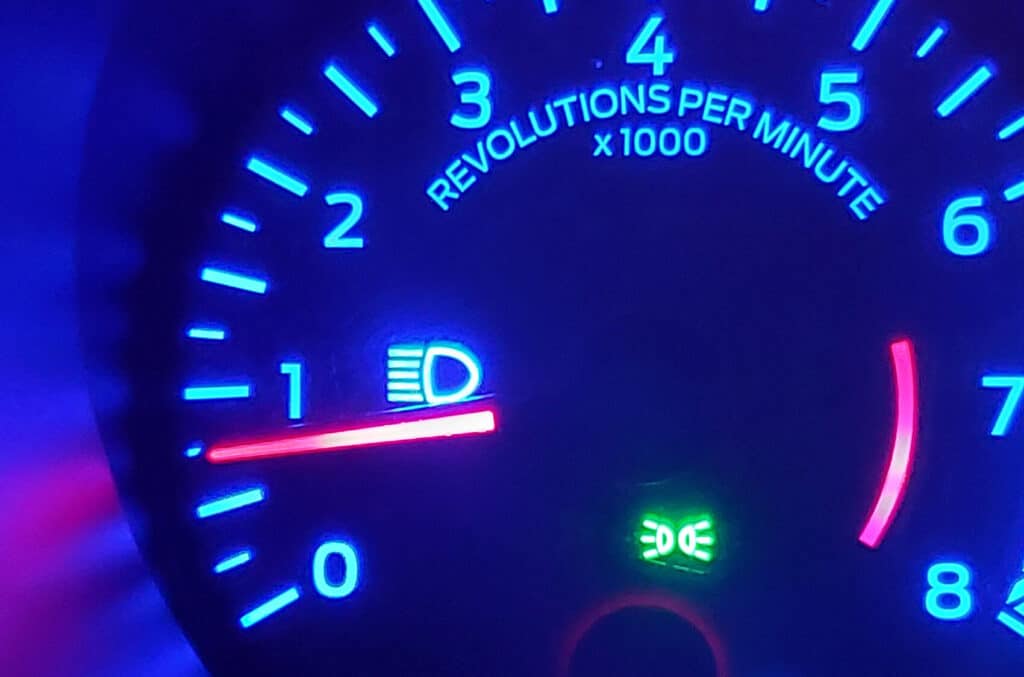Navigating the Illuminated Path — Why Understanding Your High Beam Indicator Light is Crucial
Imagine cruising on a dark highway, far from the city lights, with only the moon as your companion. At times like these, your car’s high beam headlights become your road illuminators. But what guides these guiding lights? Enter the high beam indicator on your dashboard. Understanding this tiny yet vital sign is crucial for both your safety and that of other drivers. Ignoring it could be like turning a blind eye to a potential risk.
Decoding Colors: What Do Different High Beam Indicator Lights Mean?
• Blue Indicator Light: In most vehicles, a blue light indicates that the high beams are active. It’s usually designed to be bright enough to catch your attention but not so glaring as to distract you. This color is internationally recognized for high beam indicators.
• Green Indicator Light: Some older models and specific car brands opt for a green light. While less common than blue, it serves the same purpose—indicating that your high beams are on.
• The Absence of Yellow or Red: You may wonder why you’ve never seen a yellow or red high beam indicator. Yellow is generally reserved for warning lights, while red is often used for urgent alerts like low oil pressure.
• Understanding Myths and Realities: Rumors about different colored high beam indicators, such as yellow, often circulate. However, these are not standard and can confuse the driver, as these colors are internationally reserved for other types of alerts.
• International Standards: The color coding is not random but aligns with international standards for vehicle controls and displays. This standardization helps reduce driver confusion when switching between different vehicles or driving internationally.

High Beams vs. Regular Headlights: What’s the Difference?
High beams and regular headlights serve distinct roles when it comes to safe driving, and the difference goes beyond mere luminosity. High beams are designed to light up more of the road and cover greater distances. They’re especially handy in less-developed rural areas where street lighting is minimal or entirely absent. Using high beams can make obstacles like rocks, potholes, or animals visible from afar, allowing you sufficient time to react and navigate safely.
On the flip side, regular headlights are more toned-down in terms of brightness. They provide adequate visibility for common driving conditions, such as city driving or well-lit highways. Regular headlights are designed to focus the beam downward toward the road, minimizing the glare for oncoming drivers. In essence, while high beams are your long-distance scouts, regular headlights are your everyday foot soldiers, making sure you can see and be seen without causing discomfort to other road users.
The Dangers of Misuse: Why High Beams Aren’t Always Your Friend
High beams are incredibly useful but wield them cautiously—they’re a tool, not a toy. Their intense light can dazzle other drivers, creating a temporary blind spot that can result in dangerous situations or even accidents. Misusing high beams isn’t just discourteous; it’s a hazard that compromises road safety for everyone involved.
In Canada, the inappropriate use of high beams isn’t only a bad habit; it’s a legal offense. Depending on the province, misuse can result in fines or even demerit points on your driving record. So, the next time you’re tempted to leave those high beams on, remember that the risk isn’t just immediate danger; it can have long-term consequences, both legally and for your driving record.
Troubleshooting High Beam Problems: Signs, Solutions, and Costs
• Faulty Switch: A common issue could be a malfunctioning switch, which fails to activate the high beams. This usually requires replacing the switch, which can cost around $20 to $50 for the part.
• Bad Relays: If the high beams don’t stay on after activation, you might be dealing with a defective relay. Replacement relays typically range between $20 and $40.
• Electrical Issues: Sometimes, the problem could be a loose wire or a blown fuse. Electrical repairs can vary significantly in cost but expect to pay at least $50 to $100 for diagnosis and repair.
• Bulb Replacement: If the high beams aren’t as bright as they should be, you might need to replace the bulbs. This can cost anywhere from $15 to $30 per bulb.
• Labor Costs: Don’t forget the labor costs involved in these repairs, which can range from $50 to $150 per hour, depending on your location and the mechanic’s rates.
Common Myths and Legalities: Are Blue High Beams Really Illegal?
Blue High Beams: There’s a prevailing myth that blue high beams are illegal. While certain jurisdictions may frown upon or restrict blue-tinted headlights, the blue high beam indicator inside your vehicle is generally not illegal.
Brightness Regulations: The concept of the “brightest legal high beams” is another area fraught with misconceptions. Brightness, measured in lumens, is regulated differently in various jurisdictions. Always consult local laws to ensure you’re in compliance.
Color Regulations: Some drivers think that any color goes when it comes to high beams, but this isn’t true. In many places, non-standard colors for external vehicle lights are prohibited, and you could face fines for using them.
Demerit Points: While most people are aware of the financial fines associated with high-beam misuse, many are unaware that you could also receive demerit points on your license in some Canadian provinces.
Legal vs. Social Etiquette: While high-beam usage is regulated by law, there’s also an unwritten code of conduct among drivers, such as flashing high beams to communicate with other drivers. While not legally binding, it’s good to be aware of these social norms.
Knowledge is Power: Understanding the regulations around high beams can save you from tickets and improve road safety. When in doubt, always refer to local laws and guidelines.

DIY vs. Mechanic: When to Seek Professional Help for High Beam Issues
• Changing a Burnt-out Bulb: This is a simple task that most people can handle at home with basic tools. You would only need to buy the correct bulb, which is often affordable.
• Identifying the Problem: If you’re comfortable with basic car maintenance, you might be able to identify whether the issue lies with a switch, relay, or wire. Simple tests using a multimeter can help you diagnose the problem.
• When to Call a Mechanic: If your beams still won’t stay on after replacing a switch or relay, or if you’re encountering electrical issues that you’re not comfortable handling, it’s time to seek professional help.
• Cost vs. Time: Consider your skill level and the time you have available for DIY fixes. While you might save on labor costs, you may also invest a lot of time and effort that could be better spent elsewhere.
• Peace of Mind: Having a professional mechanic resolve your high beam issues can provide peace of mind, ensuring that the job is done correctly and safely.
Lighting the Way Forward — Being Responsible and Informed
So, you see, understanding your high beam indicator light isn’t just about knowing when it’s on or off. It’s about being a responsible and informed driver, ensuring not only your safety but that of others on the road. For those in Canada facing issues with high beams, you might consider using Uchanics, a reliable mobile mechanic service, to resolve your lighting issues conveniently at your doorstep.
And there you have it — you’re now equipped to navigate the often-misunderstood world of high beam indicator lights. Knowledge is power, and in this case, it also lights the way.
